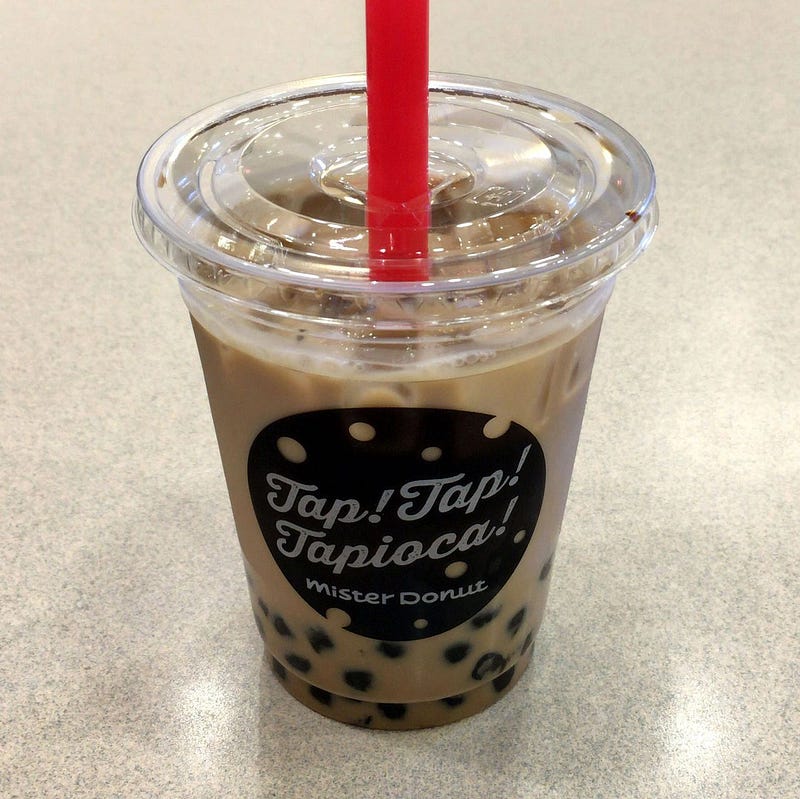Sustainable Solutions for Plastic Waste in Bubble Tea Industry
Written on
Chapter 1: The Rise of Bubble Tea and Its Environmental Impact
Bubble tea, composed of tea, milk, ice, and tapioca pearls, has surged in popularity across Southeast Asia and the Western world. This beverage trend has led to significant increases in plastic waste, particularly from the food and beverage sector.

Industrial growth and rising consumerism have contributed to an alarming escalation in municipal solid waste (MSW). The food and beverage industry's expansion is a key factor in the increase of plastic waste. A study by Lee et al. (2022) examined two waste management strategies implemented in Malaysia, focusing on greenhouse gas (GHG) emissions in terms of carbon dioxide equivalent (kg CO2-eq) per tonne of plastic waste. The methods analyzed included sanitary landfilling and waste-to-energy (WTE) conversion.
Sanitary landfills are equipped with high-density polyethylene (HDPE) geomembranes to prevent underground leakage, leachate drainage systems, and landfill gas recovery systems (LGRS) to capture methane (CH4). Conversely, WTE facilities convert CH4 into energy for electricity generation or heating.
The GHG emissions from existing sanitary landfills were calculated at 566.15 kg CO2-eq, while WTE incineration demonstrated a negative net GHG emission of -573.80 kg CO2-eq. This reduction is primarily due to the cleaner electricity produced compared to conventional fossil fuel sources. WTE incineration also minimizes landfill size by converting waste into ash.
Both WTE and traditional incineration produce CO2 and nitrous oxide (N2O). However, modern WTE facilities mitigate carbon emissions through advanced air pollution control systems like scrubbers and activated carbon filters. Alternative waste treatment methods include pyrolysis and gasification, which convert waste into usable fuels without oxygen.
In Malaysia, many landfills lack an LGRS, resulting in methane release, exacerbating global warming. The study highlighted challenges in establishing WTE facilities, noting that waste with moisture content exceeding 45% is inefficient for burning. Fortunately, plastic waste typically has low moisture, facilitating incineration. Despite the high costs associated with WTE incinerators, they ultimately reduce waste volume and disposal expenses.
New sanitary landfills that trap methane can be hard to establish due to land scarcity, high costs, and community opposition. Recycling plastic waste poses difficulties, as most products fall into grades 4 to 7, which are seldom recycled or are non-recyclable. Grades 1 and 2 plastics are more commonly recycled but only once or twice, yielding lower quality materials that eventually enter landfills.
Biodegradable plastics account for merely 1% of global production. The study concluded that WTE incineration is a more environmentally sound option compared to sanitary landfills due to the GHG savings from cleaner energy generation. This method could serve as a foundation for sustainable plastic waste management, particularly for single-use plastics from bubble tea shops.
Chapter 2: The Popularity of Bubble Tea and Waste Management Practices
With the growing popularity of bubble tea, especially during the COVID-19 pandemic, the number of milk tea shops has surged in Southeast Asia, particularly in Indonesia, the Philippines, and Thailand. Bubble tea, typically comprising milk tea and sweetened tapioca pearls, has various recipes and preparations.
Researchers Canet et al. (2022) from Bulacan State University investigated waste management practices in bubble tea shops. Their findings revealed that these establishments regularly dispose of waste to maintain cleanliness. However, composting food waste was found to be inconvenient due to space limitations and odors associated with excess moisture.
Most milk tea shops provide bags for customers and staff to separate food waste, which is collected by government-assigned waste collectors. The use of plastic straws, cups, and larger straws for bubble tea is common, as plastics are more cost-effective than biodegradable alternatives.
Unfortunately, plastic products are predominantly single-use and often end up in landfills or even worse, water bodies. Educating shop owners and staff on waste reduction strategies can significantly impact waste management practices. Encouraging customers to bring reusable containers and offering discounts or incentives for doing so can also be effective.
Transitioning to reusable glass or ceramic cups for in-store consumption and biodegradable options for takeout can enhance sustainability. Bamboo straws and unique branding can further promote these environmentally friendly practices.
The first video discusses the environmental impact of plastic waste generated by bubble tea, emphasizing the need for better waste management.
The second video presents a DIY approach to creating reusable boba cups, advocating for a zero-waste lifestyle.
References:
Canet, L., De Luna, M. C., Pulumbarit, C., Balatbat, M., Bautista, K. R., Carreon, M. A., … & Mayor, S. (2022). Waste Management Practices of Milk Tea Shops. Mae Ann and Espinosa, Jerick and Mayor, Sophia, Waste Management Practices of Milk Tea Shops (April 1, 2022). Google Scholar Waste Management Practices of Milk Tea Shops by Lena Canet, Maria Cecilia De Luna, Catherine Pulumbarit, Ma. Angelica Balatbat, Klint Reniel Bautista, Mae Ann Carreon, Jerick Espinosa, Sophia Mayor :: SSRN
Lee, C. J., Chang, L., & Tan, J. (2022). Environmental Sustainability Framework for Plastic Waste Management — a Case Study of Bubble Tea Industry in Malaysia. Process Integration and Optimization for Sustainability, 6(2), 513–526. Google Scholar Environmental Sustainability Framework for Plastic Waste Management — a Case Study of Bubble Tea Industry in Malaysia | SpringerLink